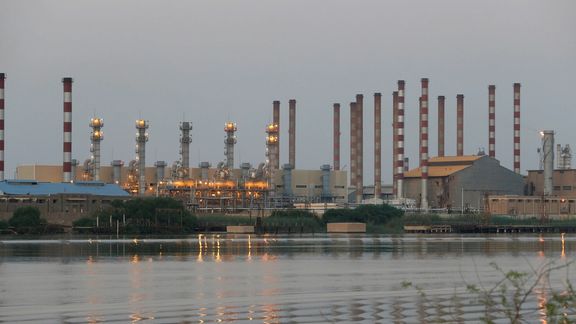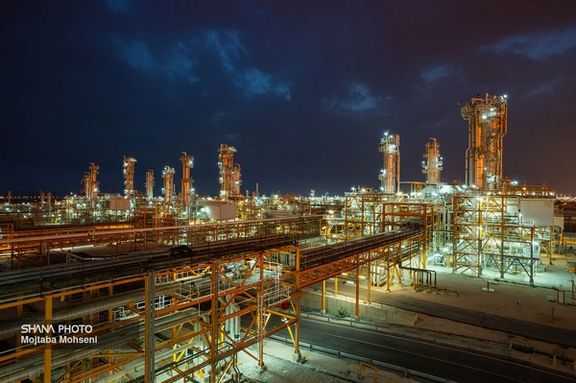Iran Oil Exports Hit Highest Record In Five Years

Iran’s oil sales have reportedly hit a record high since the US withdrew from the nuclear deal and reinstated sanctions in 2018, but pundits wonder where the money goes.

Iran’s oil sales have reportedly hit a record high since the US withdrew from the nuclear deal and reinstated sanctions in 2018, but pundits wonder where the money goes.
In an article on Friday, Bloomberg confirmed earlier claims by Islamic Republic officials about the rise in exports, saying that Iranian oil is quietly flooding into the global market again.
Citing data from market analytics provider Kpler, global strategic energy-consulting firm SVB Energy International, FACTS Global Energy Group (FGE) and the International Energy Agency, Bloomberg said that Iran’s exports have surged to the highest level in almost five years, “fortifying its re-emergence on the geopolitical stage while posing risks for a fragile global crude market.”
OPEC+ countries have repeatedly cut production to restrict supplies and control the plummeting prices.
“Iran’s crude exports smashed it last month,” said Homayoun Falakshahi, a senior analyst at Kpler. “Iranian crude is extremely interesting for those willing to take the risk to buy.”
As expected, Tehran’s ally China is its main customer, albeit with hefty discounts, which help smaller Chinese refiners offset a recent slump in profit margins.

While tanker-tracking shows that China has remained Tehran’s main buyer, official data registers no imports from the Islamic Republic in the past year. Instead, purchases have soared from Malaysia, where Iranian cargoes are often sent on a so-called “dark fleet” of tankers with transponders deactivated to avoid detection for transfer to another ship, blurring the origins of the consignment.
This practice has been going on since 2019, when the United States imposed full third-party sanctions on Iranian crude exports.
The regime is trying to save its battered economy through all means available, including mending relations with regional rivals Saudi Arabia, Bahrain, and Egypt; fostering ties with China; and most recently a tentative behind-the-scenes diplomatic effort to deescalate with Washington and the UN nuclear watchdog, the IAEA.
However, the extra sales have not been translated into tangible results in its rampant inflation rate at 70 percent, plunging national currency and popular dissatisfaction, manifested in periodic protests and strikes all over the country.
“China’s willingness to support Iran by taking its sanctioned oil, suggests a slight improvement in Iran-China relations,” Bloomberg quoted Greg Brew, an analyst at consultants Eurasia Group. He added that “All of this supports the view that Iran’s position is improving, along with its advancing normalization with other regional states,” especially given the fact the Beijing itself brokered the detente between Tehran and Riyadh, a rapprochement that was seen as a Saudi favor to China.

According to an article in Iranian daily Donya-e-Eqtesad, Iran’s oil exports – including crude, oil products, natural gas and condensates – was about $118 billion in 2011 when international nuclear sanctions were imposed, slashing the exports to half of that amount. Then came the 2014 oil price crash that pushed revenues down to $33 billion.
After the JCPOA was signed and international sanctions were lifted in 2015, Iran’s revenues began to rise and reached $66 billion in 2017 for a short while before the US pulled out of the JCPOA in May 2018 and again imposed sanctions that expanded a year later. By 2020, exports declined to about $20 billion and by some accounts to less than $10 billion.
The picture began to change toward the end of 2020 as Joe Biden won the presidential election and vowed to return to the JCPOA. At that point China began to increase oil imports from Iran.
Crude shipments have doubled since last autumn to reach 1.6 million barrels a day in May, even as American sanctions remain in place, Bloomberg claimed, citing Paris-based IEA as estimating that production has hit 2.9 million barrels a day, the highest since late 2018. “Consultants SVB Energy, Petro-Logistics SA and FGE believe that output is even higher, maybe surpassing 3 million barrels a day,” the report said.
Iran’s surge in shipments – and presumably the rise in revenues – has baffled economists and business analysts in Iran and abroad about where such a huge income is being spent, given that Iran’s currency has halved in value since mid-2022.
Mousa Ghaninejad, a professor of economics, recently said that “the oil money belongs to the people,” noting that “if the government takes it and spends it, so it should remove the taxes.”
He made the comment as the Raisi administration raised taxes by 59 percent in the budget bill of the current Iranian year (started in March), a staggering burden on its people amid high inflation and growing poverty. The total tax revenues planned in the draft budget will surpass $20 billion based on the current rate of exchange. In Iranian currency, however, this is a staggering 8.3 quadrillion rials – that is with 15 zeros.
Despite the huge tax bill for the people, the government budget still has a 50-percent deficit, due to a chaotic downturn in the economy mainly triggered by US sanctions on its oil exports and international banking.
According to a report by Tejarat News, the oil revenues are spent to balance the budget deficit as well as importing food items.
Aside from an overestimation of Iranian oil shipments, another explanation for the lack of a positive impact from increased exports is suspected deep discounts offered to China. Tejarat news for example said that China pays only two-thirds of the agreed price in cash and the rest is barter.
Iran also must undergo many other expenses for the illicit shipments and then lose more money trying to recoup revenues despite the US banking sanctions. Many different types of middlemen take huge profits for facilitating all these transactions. Otherwise, if Iran is charging even $60 a barrel, at the current rate of estimated exports, it would make $33 billion annually just from crude exports and more than $20 billion from oil products, balancing its budget.